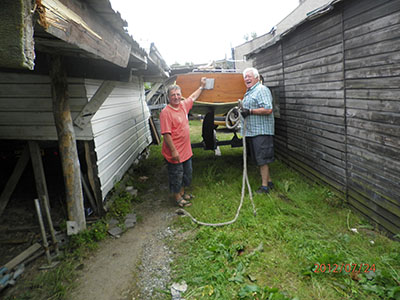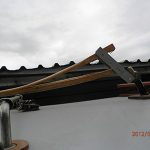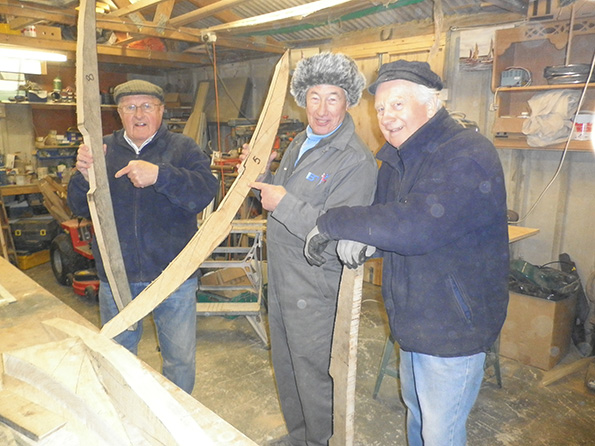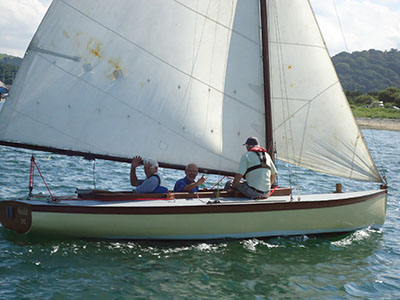It would have been nice to refit Gwalch with all new fittings. Our budget, however, doesn’t run to new Harken blocks etc. so we are largely making do with what we’ve got.
Keith and I did a fair bit of scouting around the other boats in the fleet to try to ensure we fitted the bits in the right place. This is when you find that every boat is different. ONE Design………HAH!
COD’s aren’t too complicated. There are also many sailors of COD’s, currently or in previous years, who will give you their views on what works and what doesn’t. Unfortunately, they are all different and often contradictory!
Naturally, basing it on the “KISS” principle (Keep it simple,Stupid) we put it together as best we could. Time was now running very fast. We had important deadlines to meet. My objective was to get Gwalch to our Regatta in the Menai Strats and time was really tight. Also, we were on notice at our premises. Alun Simpson’s nephew, who has inherited the property wanted us off the site by end of August so Gwalch had to be finished pronto.
The outstanding items turned out to be the Bow Roller and Forestay fitting. The latter was purchased from Davey’s, a chandler specialising in Classic boat stuff and the Bow Roller was fabricated from stainless steel by David Williams in Builder Street.
The other items that caused concern were the Back-Stay Runners. The original COD Specification calls for 2 Runner Plates for the Back Stays so presumably the various tracks that most boats have got are a more recent addition. The problem is that the leeward backstay has to be let off when sailing downwind to allow the boom to go forward. All COD’s have got some device to make this job easier. Most common are runners on the deck with the backstays attached to travellers held in them. There are other variations including one that has levers that look like they come from Deganwy signal box!
It was time to get the mast up. Firstly, to check that the mast step and the mast chock were correct and the mast would fit in and secondly so that we could finalise the positions of deck fittings such as the jib fairleads.
In theory it should have been easy using our lifting gear to get Gwalch back on the trailer. However, this was the first time we had lifted a newly painted boat and we were being very careful not to damage the paintwork. The boat was eventually loaded (we had borrowed Minnie’s trailer) and we pulled it into the open air for the first time in two years.
Minnie’s trailer is a little higher than our own and negotiating the sheds was a bit tricky. We were so intent on avoiding contact with the sides that we didn’t notice that we had hooked a rope from the tent around the tiller. Incredibly, it was not noticed until the next day that the tiller had been forced back so hard that it split.
The tiller was a brand new one formed from an off-cut of one of the oak deck beams which had taken hours to make and lovingly treated with coats of varnish. It was a little heart-breaking to say the least. Fortunately, it was repairable with our old friend, West Epoxy adhesive.
We stepped the mast without too much drama and noted that the shrouds we had would need shortening. This we would do after the boat was on the water so that the mast-rake could be set correctly.
The Backstays proved more difficult. The sliders aren’t sliding and we’re not happy that the tracks are secure enough. A lot of time has been spent on these and we are still not happy. With the clock running it looks like we’ll have to rig a temporary arrangement in order to get it away.








